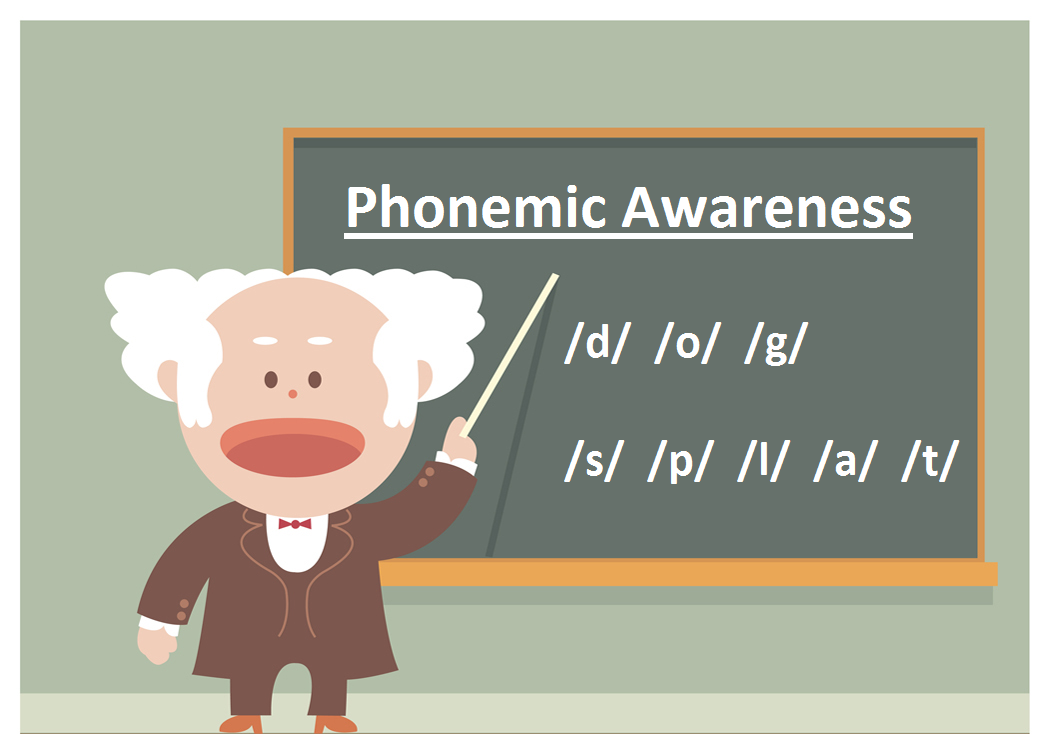This newsletter has been specifically created for you to acquire valuable knowledge in the areas of Phonemic Awareness Instruction, Phonics Instruction, Fluency, and Comprehension. These components are especially important for students that want to achieve high results in the academic sphere as well as those that would like to develop and improve their phonological awareness. In this newsletter, you will be presented with the key findings of the research conducted by the National Reading Panel and The Journal article by Joan Sedita.
Phonemic awareness (PA) has received much attention from educators that are trying to identify the main components of programs that will teach children how to read. This is so because phonemes represent the smallest units that constitute a spoken language (National Reading Panel, 2000). Therefore, if a child can manipulate phonemes in spoken words, he or she possesses phonemic awareness.
PA can be improved through:
- Isolation of phonemes, for example, “tell me the second sound in the word tree.” (/r/);
- Phoneme identification, for example, “what sound is the same in words bell, bike, and boy?” (/b/).
- Categorization of phonemes, for example, “which word does not fit? sea, tea, tree?” (tree).
- Blending of phonemes, for example, “what word is /b/ /a/ /i/ /k/?” (bike).
- Deletion of phonemes, for example, “what is the word smile without /s/?” (mile).
- Segmentation of phonemes, for example, how many phonemes are there in the word cat? /k/ /æ/ /t/ (3 phonemes).

The results of the research conducted by the National Reading Panel showed that phonetic awareness instruction was significantly better than alternative methods of instruction, with the overall effect size of 0,86. Therefore, such findings suggest that teaching children about how to manipulate phonemes in words was a very effective way of improving their literacy outcomes.
It is important to differentiate between phonemic awareness and phonics because many can confuse these terms. While phonemic awareness refers to the understanding that sounds of spoken language make up words, phonics refers to the understanding of the relationships between sounds and letters in a written language (Sedita, 2001). Therefore, phonics instruction educated children about how to read words properly, recognize predictable word patterns, as well as remember how to read irregularly spelled words. Research conducted on phonics instruction has found that a systematic program that teaches students about the letter-sound relationships is much more effective. Such an approach to phonics instruction is beneficial because it provides children with materials (books or stories) that can be used to apply their knowledge about the letter-sound relationships as they write or read (Sedita, 2001).
Fluency and comprehension are also integral components of successful navigation and understanding of a text. Research conducted on the effective fluency instruction showed that monitored and repeated oral reading could improve students’ fluency and overall better achievement (Sedita, 2001). Without fluency, text comprehension is almost impossible to achieve. The research on text comprehension instruction has shown that monitoring, graphic and semantic organization, summarizing, story recognition, and answering questions have proven to be the most scientifically valid (Sedita, 2001).
Teaching children how to read and write correctly is one of the most important tasks because these skills will support their learning in the future. We recommend you to encourage your children’s learning in everyday interactions, give them examples of new words with phonemes, and play more word games. The learning shared with parents can be a very valuable and rewarding experience.
References
National Reading Panel. (2000). Teaching children to read: An evidence-based assessment of the scientific research literature on reading and its implications for reading instruction. Web.
Phonemic awareness teacher image [Online image]. (n.d.). Web.
Sedita, J. (2001). What every educator and parent should know about reading instruction. The Journal, 11(4), 1-7.